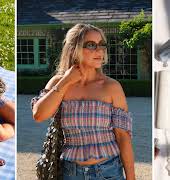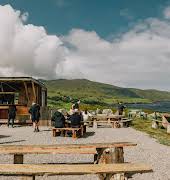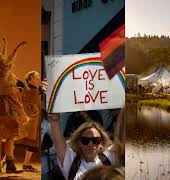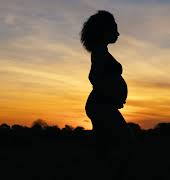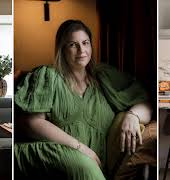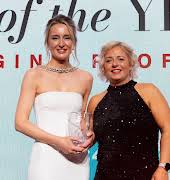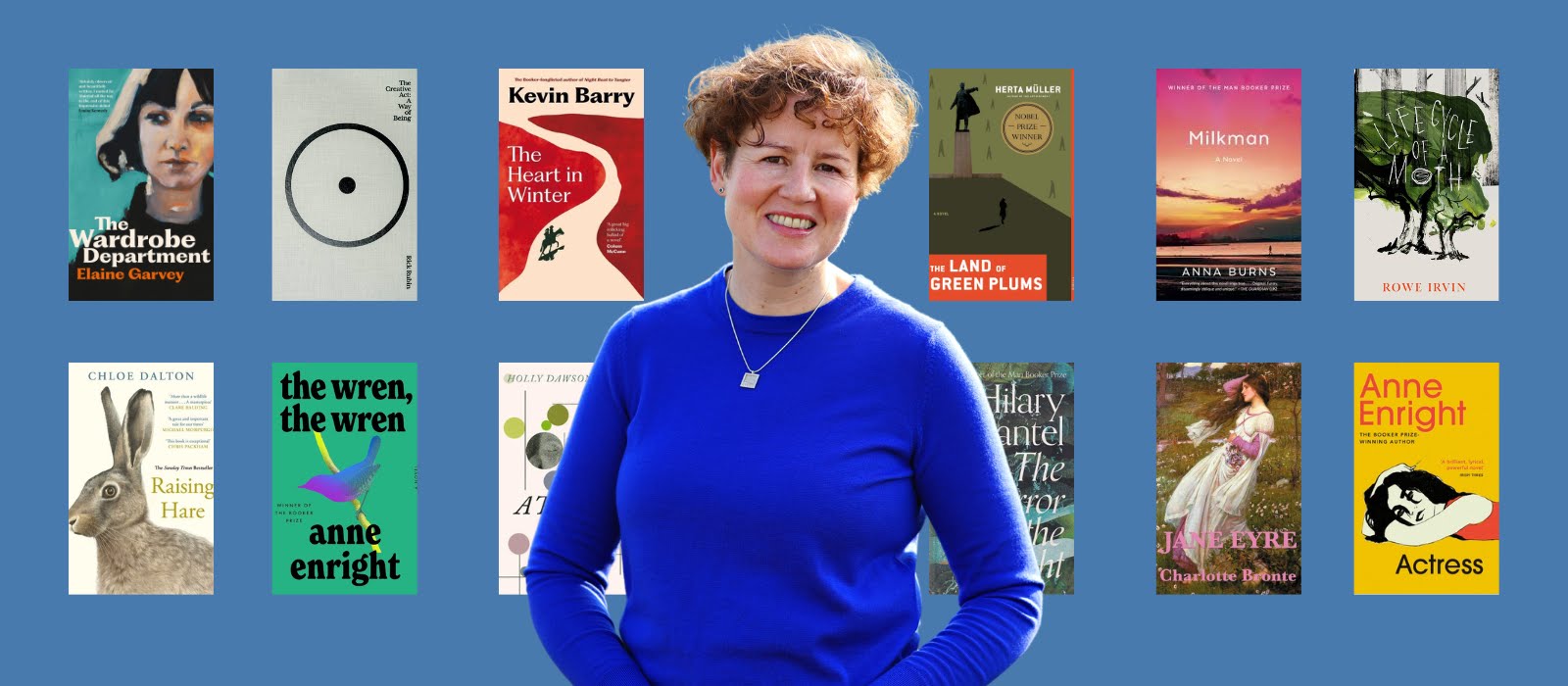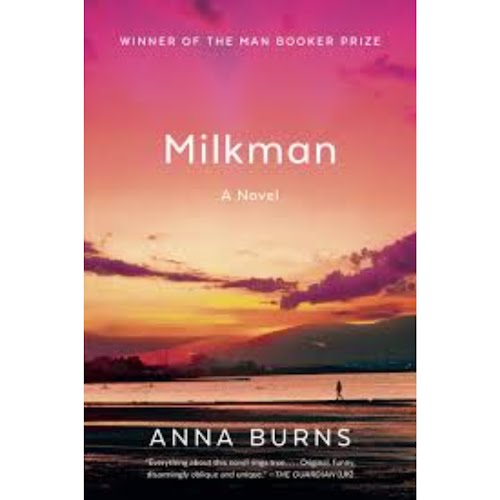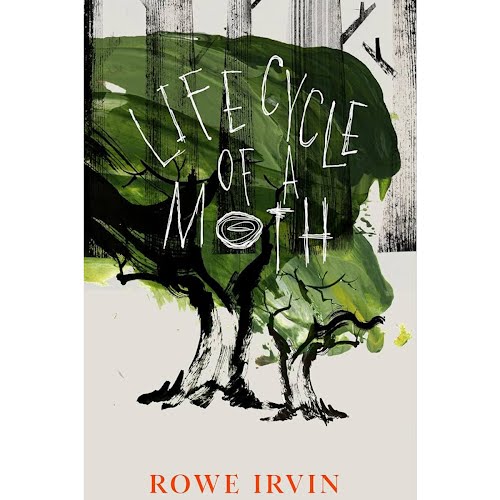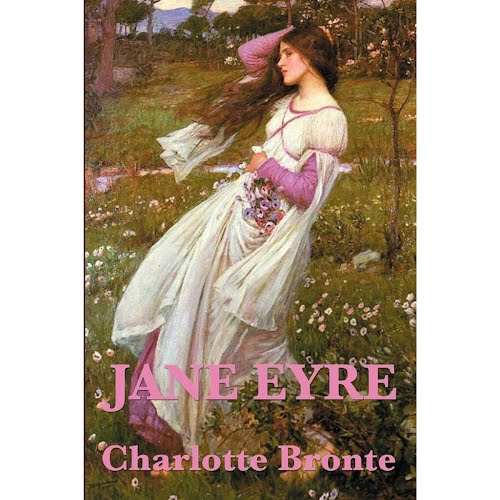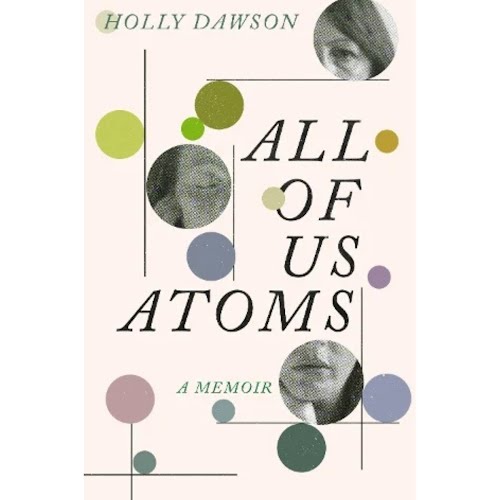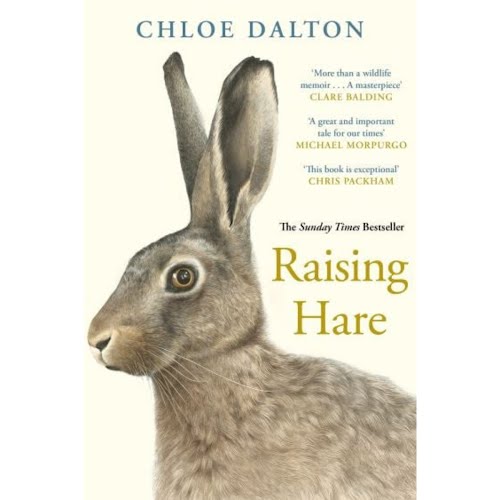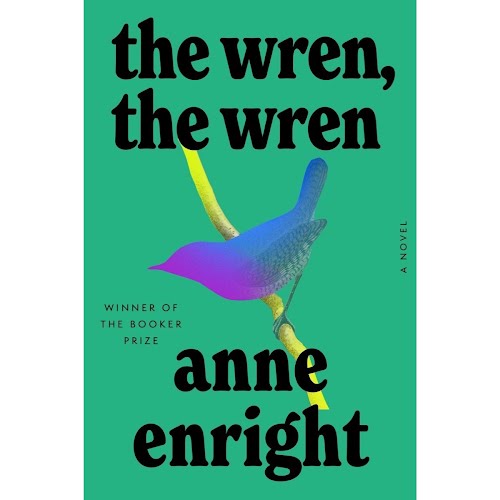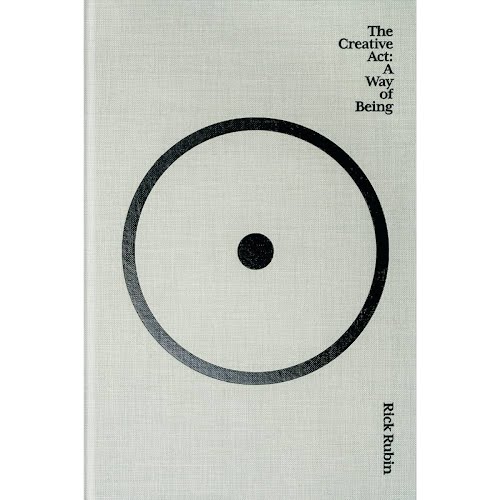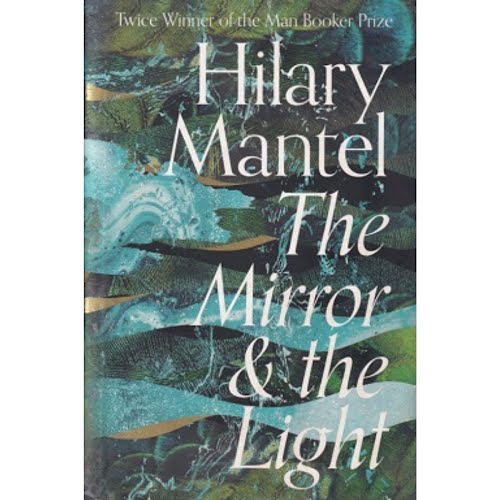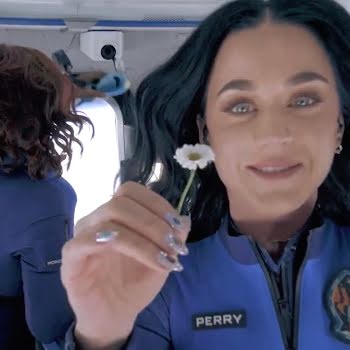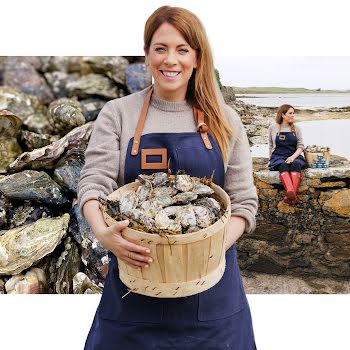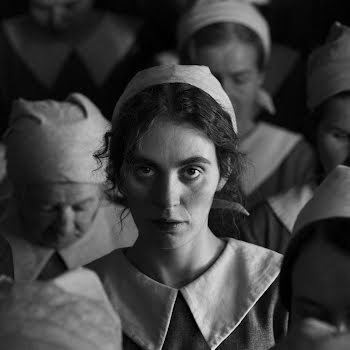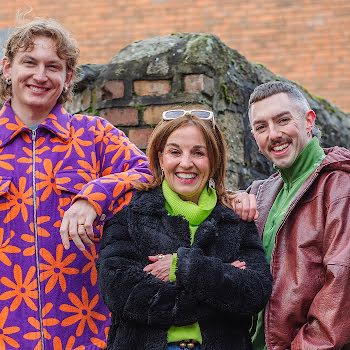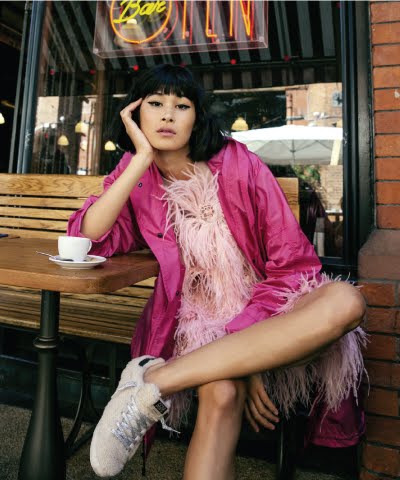Page Turners: ‘The Wardrobe Department’ author Elaine Garvey
Author Elaine Garvey discusses her most beloved literary titles, writing process and the importance of staying in an uncomfortable emptiness.
Sligo author Elaine Garvey’s short stories have been published in The Dublin Review and Winter Papers, and her debut novel, The Wardrobe Department has just been published with Canongate.
Mairéad works all hours in a run-down West End theatre’s wardrobe department, her whole existence made up of threads and needles, running errands to mend shoes, fixing broken zips and handwashing underwear. She must also do her best to avoid groping hands backstage and the terrible bullying of the show’s producer. But, despite her skill and growing experience, half of Mairéad remains in her windy, hedge-filled home in Ireland, and the life she abandoned there.
In noughties London, she has the potential to be somebody completely new – why, then, does she feel so stuck? Between the bustling side streets of Soho, and the wet grass of Leitrim and Donegal, Mairéad is caught, running from the girl she was but unable to reveal the woman she’d hoped to become. Told with rare honesty and equal measures of warmth and bite, The Wardrobe Department is a story about reckoning with the past, finding the courage to change the present — and asking what comes next.

Did you always want to be a writer?
I can’t remember wanting to be anything else. I must have learned early on not to say it aloud, however, possibly because the person you said it to would immediately ask for proof. Or try to talk you out of it. Becoming a published author came from a lot of failure. Most of what I have written has been rejected, and I still expect that to happen. What made the difference this time was listening to feedback from other writers who are also excellent readers and could see what was working and what wasn’t. Arts funding helped. I was able to finish The Wardrobe Department and prepare it for publication because of arts funding. One aspect of this was the ability to participate in a mentorship programme, where I was very lucky to be paired with the writer Danielle McLaughlin.
What inspired you to start writing?
My sister and I made up our own stories and plays to entertain each other when we were children. I used my school notebooks for the stories; I think that was the start of it. My mum joined a writing group when I was in secondary school and they would meet in our front room sometimes. They were, and still are, a very encouraging group. My mum is a poet and is working on her second collection. Finding the confidence to keep writing as an adult was difficult, fear began to creep in and take over, but I know that if I don’t write, I become unwell.
Tell us about your new book, The Wardrobe Department. Where did the idea come from?
The Wardrobe Department is set in London in 2002, and the main character, Mairéad Sweeney, works in a costume department in a theatre. She is Irish and is conflicted about working in the West End — she adores the theatre and is in awe of her colleagues, but she also knows there is a lot of bullying and harassment in her workplace. And she experiences homesickness so intensely, it’s like grief.
I had a short story I was working on for maybe sixteen years and couldn’t finish. A combination of things led me to apply for a Stinging Fly fiction-writing workshop with the writer Sean O’Reilly, and a group of nine other writers. Over the course of those Monday evenings, this story started to form. We took it in turns to submit draft work for review, which can be excruciating for the writer, but, if you find a group and mentor you can trust, it can bring the work to a place you might not have reached on your own.
It took me months to find the right name and the right job for my character. I did not want to go to London or inside a theatre, those places were far beyond my comfort zone, and I resisted that for a long time. What helped was the support of other writers and the moments when the characters surprised me. There is a scene towards the beginning of the book where Mairéad is caught skiving off work by her boss and the theatre’s caretaker. It took me six months of failed attempts to write that scene, and then it came out almost in one go. From that point onwards, I had a place to begin.

What do you hope this book instils in the reader?
What I’m hoping is the story will go out into the world and start living its real life. If readers connect to it, that will mean a lot to me.
What did you learn when writing this book?
The story you want to write is not necessarily the right story. I was listening to a visual artist talking about being surprised by her work, and she said that “the drawing knows what I don’t allow myself to know.” This is also how I feel about stories. I re-structured my life several times over in order to write this book and I’m glad I travelled in unexpected ways. Denise Gough is reading the audiobook of The Wardrobe Department. If someone had told me that while I was writing it, I would have dismissed it as impossible and I would have been wrong.
One practical thing I learned, from the research I carried out on dressing actors, was how to tie shoelaces properly. Turns out, I’d been using the wrong knot and that’s why mine kept re-opening. This is not intended to sound flippant, it’s something I use every day now: cross the same lace over the top for the knot and the bow, don’t switch laces. The bow should sit straight across, on an east-west axis. If it’s asymmetrical, the bow will loosen and eventually re-open.
Tell us about your writing process?
Slow and steady, like the tortoise in the fable. Staying in an uncomfortable emptiness for a long time is my process, learning to watch the weather in a new country, living with it, gradually linking form and idea. This is at odds with the pace of what’s next, what’s next, what’s next. It takes a lot of energy to withstand the pressure to produce and not be derailed by other people’s expectations. When I read the poem Sweeney Astray as a teenager, there was something in it I recognised but couldn’t articulate. Twenty years later, Sweeney led me to the main character in The Wardrobe Department.
Where do you draw inspiration from?
Where? That’s an interesting question. Where are we when an idea comes? In the middle of something else. Idling. Washing the dishes. Waiting for the lights to change. Staring out of the window. A word overheard, a random connection in your thoughts before you fall asleep. The writer Una Mannion told me about ‘hot places’; an imaginative place which is especially generative for fiction. Ballybeg or Hy-Brasil. I only know it when I get there, and I don’t know how to get there.
What are your top three favourite books of all time, and why?
I like to re-read books. Reading the same novel at lengthy intervals is often very satisfying. The stories take on new meanings as I age, revealing how skilful the writing is and how much I’ve changed. I don’t have favourites of all time, because it depends on when you step in the river, but the books I re-read while writing The Wardrobe Department were: The Land of Green Plums by Herta Müller, Love and Sleep by Sean O’Reilly, Milkman by Anna Burns, Jane Eyre by Charlotte Brontë, Actress by Anne Enright, The Mirror & the Light by Hilary Mantel, as many translations as I could find of Uncle Vanya, the play, by Anton Chekhov, and Sweeney Astray, translated by Seamus Heaney.
Who are some of your favourite authors, Irish or otherwise?
This is a list I hope to keep adding to because there are large gaps in my reading: Sheila Armstrong, Pat Barker, Kevin Barry, Anne Enright, Olivia Fitzsimons, Dermot Healy, Elizabeth Jane Howard, Claire Keegan, Claire Kilroy, James Kelman, Louise Kennedy, Olivia Laing, Amy Liptrot, Una Mannion, Hilary Mantel, Danielle McLaughlin, Lisa McInerney, Thomas Morris, Helen Macdonald, Louise Nealon, Sean O’Reilly, Gwendoline Riley, Marilynne Robinson, Stephen Walsh.
What are some upcoming book releases we should have on our radar?
I’m rarely up to date. Whatever I’m supposed to have read to join in the conversation, I usually haven’t. However, I am looking forward to: The City Changes its Face by Eimear McBride, Charlotte by Martina Devlin, All of us Atoms by Holly Dawson and Life Cycle of a Moth by Rowe Irvin. Top of my list of recent publications to read next is The Heart in Winter by Kevin Barry.
What book made you want to become a writer?
If I could answer this in a different way — it was probably a combination of reading, visual art and live performance. I can’t recall one book, but I remember a travelling theatre company who came to town when I was young. They performed Romeo and Juliet in a circus tent, with not much more than a huge sheet of cloth for a prop. The world they created was completely absorbing; the play is a tragedy, but there was so much joy and play and humour and magic that I didn’t want to go back to the real world afterwards. It was something greater than the sum of its parts. The book that helps me to keep writing at the moment is The Creative Act: A Way of Being by Rick Rubin.
What’s one book you would add to the school curriculum?
My novel opens with a woman walking. This is a tribute to all the books I’ve read with women walking, and the most memorable of these for me is the ‘girl who reads while walking’ in Milkman by Anna Burns. It is a tour de force. Whenever I pick it up, I want to start re-reading it again. The psycho-political atmosphere, the balance of menace and humour in the writing as it soars away on exquisite tangents, contradicting the maxims delivered to writers about limiting the number and naming of characters. It’s a book I would love teenagers to have access to and discuss in class.
What’s the best book you’ve read so far this year?
This was a good year for reading. There are quite a few books I loved, including Raising Hare by Chloe Dalton, Question 7 by Richard Flanagan, Bright I Burn by Molly Aitken and The Wren, The Wren by Anne Enright.
What’s some advice you’ve got for other aspiring writers?
When I was working full-time and trying to write in the tight spaces around that, it didn’t help to read about people getting up at 5am to write for two hours. I tried shift work. I tried a four-day week. I tried writing before work and before sleep. This is really hard on the body. Writing is a lifelong process and I had to learn to simplify, to take away, to wait until I could distinguish the right frequency in a noisy world. I reached a point in my life where I had to align my intentions with my behaviour. I was not devoting enough time to writing and I needed to examine what I was doing instead and why. Taking a step towards it every day in order to create a sustainable practice is one way of giving it the attention it needs. Then go through the doors that open.
Lastly, what do the acts of reading and writing mean to you?
We need stories. Whether awake or asleep, we are constructing stories about how we got here and where we’re going. I don’t know how you could learn, or teach, or get through the day without using narrative. Our minds grow in response to other minds and reading can connect us across time and space, with someone who put words on a page centuries ago. I write from where I am, in the place and tradition I was born into. The world we share is populated by other places and other traditions, and we, all of us, need many more and varied stories.
The Wardrobe Department by Elaine Garvey (€16.99, Canongate) is on sale now.
Portrait photography by Mark Capilitan.


